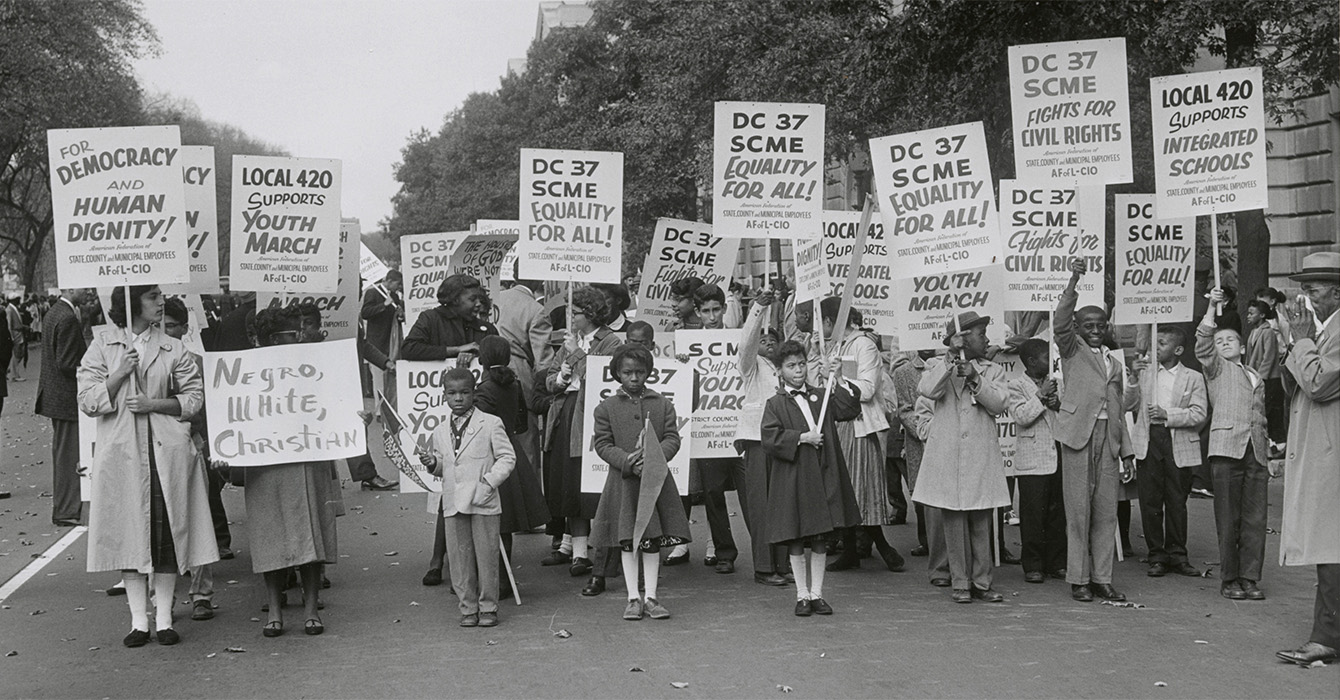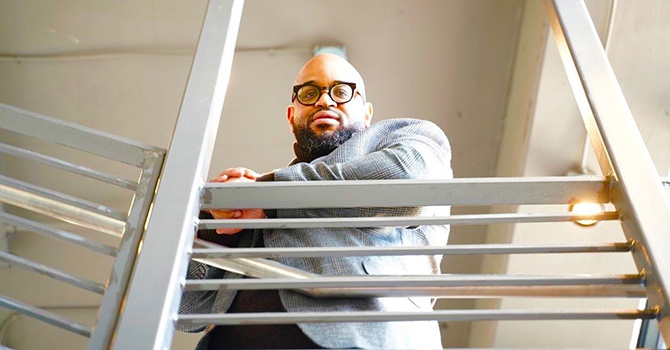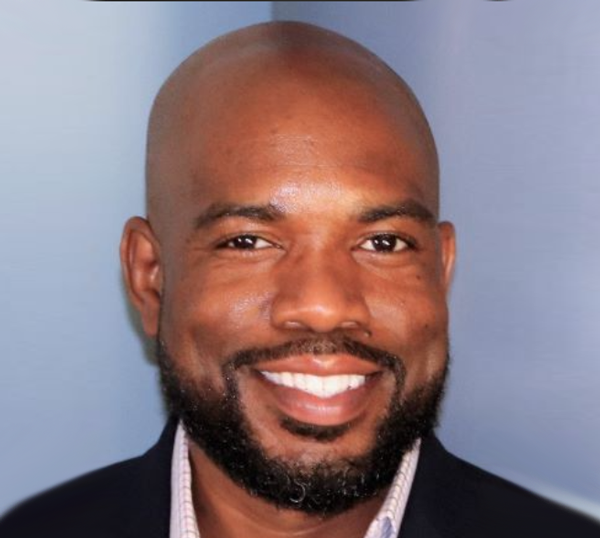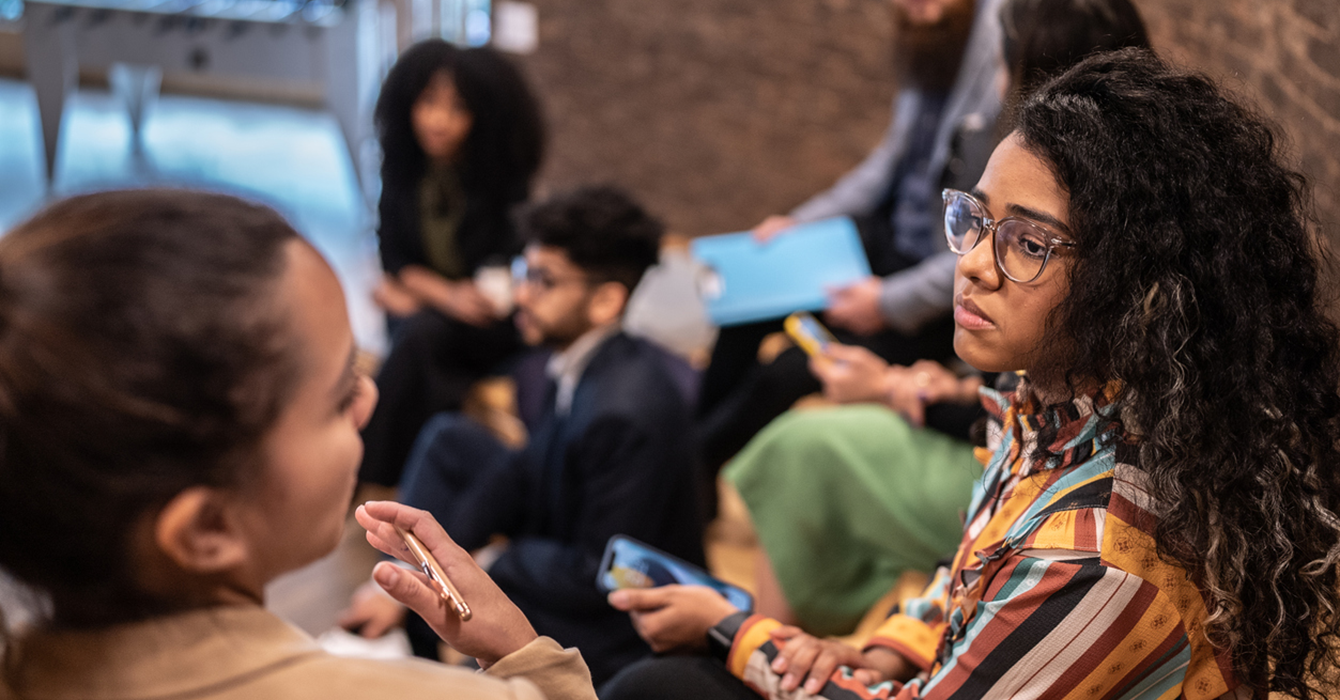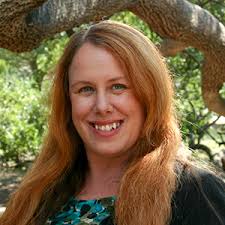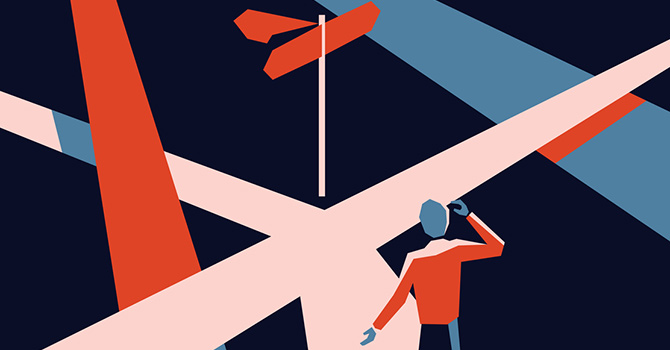How do you create a culture of innovation in a university with nearly 45,000 students, 7,000 faculty and 15,000 staff?
That’s the goal of the University of Michigan’s Office of Academic Innovation, where James DeVaney is charged with leading academic innovation at the massive institution and creating a culture of innovation in learning.
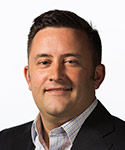
DeVaney’s office oversees the university’s MOOCs -- massive open online courses -- and has undertaken a number of experiments such as teach-outs, which are short, online courses modeled on the teach-ins of the 1960s.
“What all of those different kinds of experiments have in common is that we’re thinking about different kinds of large populations,” he said.
DeVaney came to the University of Michigan from Huron Consulting Group, where he advised more than 50 universities in more than 15 countries across the Middle East, North Africa, Europe, Australia and North America.
He has an MBA and a master of public policy from the Stephen M. Ross School of Business and the Gerald R. Ford School of Public Policy at the University of Michigan.
He spoke to Faith & Leadership while at Duke for the NextEd Festival. The following is an edited transcript.
Q: Is your office primarily focused on innovation through technology?
Technology is not irrelevant here, but the driver is learning. What we’re trying to do at the University of Michigan, which is a really big place, a very decentralized place, is create a culture of innovation in learning.
Sometimes when I speak with faculty or other stakeholders on our campus, I’ll describe our group as one focused on design. Technology plays a role in designing learning experiences.
We create massive open online courses, or MOOCs. We create what are called teach-outs. We help reinvent large foundational courses. We create open educational resources for the broader public and for people in various educational settings.
What all of those different kinds of experiments have in common is that we’re thinking about different kinds of large populations. We’re thinking about the affordances of technology and what is possible when we use analytics in smart ways to deliver personalized experiences at scale.
So we’re not tech evangelists, but we’re not technophobes either.
What we’re trying to do when we work with faculty innovators or with schools or with students who are creating experiences is helping them make smart choices with technology, but starting first with, What learner population are we trying to reach?
Q: At an institution as large as yours, how do you even get a grip on leading change or innovation?
There are a couple of different strategies and tactics that play simultaneously.
From the beginning, we needed to figure out what we’re already doing right. The nice thing about a 200-year-old university is you’re not starting from scratch.
There’s actually a great deal of academic innovation happening all over the place, but in an environment that’s quite decentralized, sometimes there isn’t a spotlight shining on those great examples.
One of the things we did early on was look around and see where there are really interesting models and use cases for academic innovation, to help provide examples for people when rhetoric isn’t enough.
It’s one thing to have a North Star driving your work -- “transforming residential education in an information age.” But that doesn’t come to life for everyone. Sometimes you need examples.
Another tactic is creating a network of ambassadors for this kind of work. Once we identified really great examples, we seeded more experiments. We want to help those innovators in that, to drive the conversion process with other people across an institution.
We’ve created a network of innovators.
Some are thinking deeply about the role of learning analytics. Others are thinking about, How do we reach pre-college learners and enhance diversity in an institution like ours? Others are saying that once we solve for diversity, we’ve created another issue, which is inclusion. How do we create a more inclusive environment for that more diverse population?
Others are thinking about the fact that we are a public university. That meant one thing when we were formed in 1817 in the Michigan Territory but another in 2017 when we can in five years create MOOCs that reach 6 million people around the world. So what is the public in this era?
People are trying to solve different kinds of educational problems. What we’re trying to do is bring innovation as “team sport mentality” to that work.
We try to meet them where they are and create a team around them that is mindful of the skills and experiences that they’re bringing to the table, and what they don’t have quite yet.
So with our model, we try to build a very flexible mechanism to bring some of these really interesting experiments to scale.
Q: What is a teach-out?
I’ll give you an example. [In September,] as news of hurricanes was dominating the news cycle, I met with a few of our engineering faculty that focus on atmospheric science, and we talked about what the broader public needed to understand about what’s going on.
So we boiled that down to a handful of questions: What causes a hurricane? Are they getting stronger? Is there a connection to climate change? How do institutions, communities, governments, other kinds of organizations both prepare and respond to these kinds of things?
In six days, we created a teach-out, an online global community learning event, for anyone around the world to be able to participate in and learn about these ideas.
Importantly, it was structured as a discussion, where people would contribute to it as well. As we think about the future of public engagement, it’s beyond the broadcast model -- an institution with expertise reaching out to the world -- to a two-way communication, two-way engagement model, where there’s much to learn from the world.
So in the first five hours of that teach-out, 900 people from around the world introduced themselves in that environment and started talking about their experiences. Some wanted to understand the science. Some wanted to understand how these institutions respond. Others wanted to develop a way to act in support.
They were looking for others -- for ideas, or to share their ideas. People came out of those discussions and said, “I work for FEMA; I’m on the ground in Florida, and here’s what’s actually happening. “
And so all of a sudden, what was once about university experience being shared became that plus the lived experiences of many contributing to a multidirectional learning environment.
I think we’ll see more and more of that as we broaden our understanding of where expertise can come from and think about universities as a platform for collecting and sharing that expertise.
Q: You talked about personalization and scale. Tell me a little bit about the tensions between those two things.
So think of the first five years of MOOCs as being an example of reach, and then think about the Oxford tutorial model as an example of personalization.
Is there something that can take the best of those worlds and create highly personalized, adaptive learning environments where people contextualize by [engaging with] a persisting community of learners? Can we create something?
Delivering the Oxford tutorial model for everyone on the planet feels cost-prohibitive right now, but MOOCs, as delivered in the first five years, don’t feel like they’re enough to change the access to high-quality higher education for the many people who need it.
So we need to keep driving toward, What are the different ways to personalize at scale?
Q: Presumably, this has been an issue for many years -- even with something as basic to university undergraduate education as the large lecture class.
That’s right. And that’s where there are other modes of technology that are really helping us think about use cases like the large lecture hall.
So we’ve created something called the e-coach that provides personalized communication, messaging, to learners while they’re in a course, to help them with different study habits, with different ways to engage in the course, to give them tips before there is a problem.
We are anticipating student behaviors and giving them nudges to reach their potential. We’ve been developing tools that facilitate more agency, to allow students to design their own experience while at the University of Michigan.
The enterprising, uber-prepared student knows how to do this already, but that student is not the norm.
Many students come in and they need the ability to dabble and explore, but to have some of the pathways illuminated for them.
E-coach is a tool that essentially pulls from a student data warehouse to develop a personalized coach for that learner, essentially delivering the expertise of lived experiences from students from many generations before them.
So rather than getting feedback solely from an adviser after you’ve already done poorly in a course, well before that happens, e-coach provides targeted interventions to help someone become successful and persist through a curriculum.
Q: So you’re not being matched with a person. You are electronically given wisdom from many people like you.
Correct. Real people that are part of the University of Michigan community, past and present, have helped, by way of their experiences, to design advice which is then fed through a system targeted toward individual students who need that advice at a certain point in time.
So it’s essentially taking a combination of academic advising and peer advising and delivering that at scale to a large student population.
Q: About five years ago, everybody was talking about MOOCs. You are a major innovator in this sphere. What’s happening with MOOCs now?
When MOOCs were first created, there was an immediate response that it would either dramatically change or disrupt or destroy or save higher education. A little bit overblown.
Many institutions, like Michigan, like Duke, embraced that ambiguity for a few years and led a number of experiments.
They extracted learning from those experiments and started to see MOOCs not as a single, monolithic thing but as many, many different things. Now that MOOCs are, I would argue, really gaining traction and communicating a clear return on the investment of effort and energy, MOOCs are helping us think about college access differently.
MOOCs allow us to reach into different communities and prepare people for higher education. They allow us to experiment around curriculum and develop more agile curriculum to meet the changing needs of people in different spheres of society. They allow us to disseminate research more rapidly. They allow us to think about the construction and design of courses. And we can take those insights and apply them in residential environments.
So they’re becoming many things, and I would argue that’s what we all hoped they would live up to.
MOOCs don’t present an existential threat to universities. They’re a wake-up call about how we can engage a much wider population in our era of information.
Q: Have there been any negatives that have shaken out in the last five years as well?
Generally speaking, MOOCs are still largely broadcasting education, and haven’t lived up to their potential when it comes to social learning and environments and the communities that could be built.
With our teach-out series, we’re trying to accelerate that process a little bit, but we haven’t achieved what we want to in terms of how peers learn with each other, how learners can construct their own view of the world.
However, they are receiving access to really high-quality content from institutions. In my view, this isn’t failure. This is just observation about where we are today.
We gave lectures in universities for 800 years to figure out whether they were the right mode of learning, and we’re still trying to figure that out.
I do think what we’ve solved for already is that some of the constraints we thought were there about how far a university could reach have been relaxed.
What we can do within those environments to create networks and communities of learners -- I think that’s where we still have a long way to go.
Q: When you said the constraints are relaxed, what do you mean by that?
When we think about delivering a lecture pre-MOOC, the ceiling on that dissemination might be 1,000 people. We’ve had MOOCs with 200,000 people engaged.
Are they having a uniform experience? No, but they also join those MOOCs for different reasons. So some of that is OK.
With the teach-outs, my hope is not to maximize enrollment, though large numbers will help. My primary goal is to get people to interact with people that have beliefs and perspectives different from their own.
If we can create those kinds of interactive environments, we’ll start to innovate around inclusion and diversity of perspective in addition to the reach itself.


